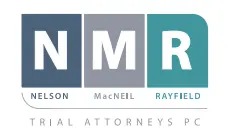By now, everyone has heard of personal injury litigation. Some people, unfortunately, have experienced a personal injury case first-hand, either as a plaintiff pursuing a claim or as a defendant defending a claim. Others have friends or family that have been involved in a personal injury case. Many have seen advertisements for injury lawyers on billboards and in written media. Most of us have seen commercials on television or heard advertisements on the radio.
However, if you do not work in the legal industry, you may have questions about personal injury litigation and how it works. The factors that play a role in evaluating an individual’s case may be confusing and difficult to parse. This post will discuss four signs indicating a strong personal injury case.
The Opposing Party Was Negligent
Deciding who was or was not negligent is key to a personal injury case. Under Oregon law, negligence is defined as the failure to exercise ordinary (or reasonable) care. Sometimes, negligence is clear and easy to prove. For example, when multiple witnesses observe a driver run a stop sign or red light and cause a crash, it is easy to verify that the party acted negligently if the case is required to go to court. In other cases, the question of negligence may be more difficult. For example, if two drivers were distracted and crashed into one another, a jury may be required to proportion negligence between the parties.
Negligence can arise in many different circumstances. Below, we will list a few common situations in which negligence can lead to a personal injury case.
- Car accidents typically generate the most personal injury cases. Examples of negligence that cause car accidents include speeding, distracted driving, failure to yield, illegal turns, and driving too fast for current road or weather conditions.
- Pedestrian accidents
- Slip and falls and trip and falls in commercial establishments
- Medical malpractice
- Other professional malpractice (such as attorneys, dentists, accountants, nurses, insurance agents, etc.)
- Nursing home negligence
- Food poisoning
- Semi-truck accidents
- Motorcycle accidents
- Bicycle accidents
Injuries
While it is undoubtedly regrettable any time one person is injured due to the negligence of another, proving injury is another element that the law requires to recover personal injury damages. Medical doctors and other healthcare professionals, along with appropriate documentation, are often used to prove injuries. Plaintiffs who prove a right to recover in a personal injury case are entitled to many types of damages, such as reimbursement of medical and hospital costs and recovery of lost wages.
In some cases, plaintiffs may also recover non-economic damages, such as pain and suffering.
Causation
An essential legal element that a plaintiff must prove is called “causation.” Causation simply means that the defendant’s negligent actions caused the plaintiff’s injury. For example, assume that Jim runs a red light but doesn’t hit anyone. Five minutes later, he is rear-ended by Jennifer while he is stopped at a stop sign, and Jennifer is injured.
In this case, while it is true that Jim was negligent when he ran the red light, that negligence was not the cause of Jennifer’s injuries. On the other hand, if Jim hit Jennifer when he ran the red light and broke her leg, his negligence would have caused the injury.
The Statute of Limitation Has Not Run
Someone injured in an accident must file all personal injury actions and civil actions within the applicable statute of limitations. Waiting too long can exterminate a claim. Calling an attorney is a prudent first step.
Call with Questions
The experienced personal injury lawyers at Nelson MacNeil Rayfield handle all types of personal injury matters across Oregon. Please, call us for a free consultation, and we’ll investigate the claims and help you understand the process. We know that the only way to make Oregonians safer is to hold accountable those who negligently cause injury.
